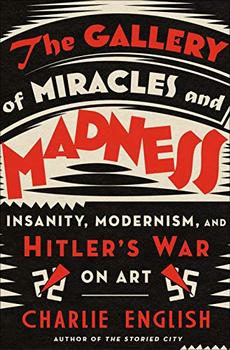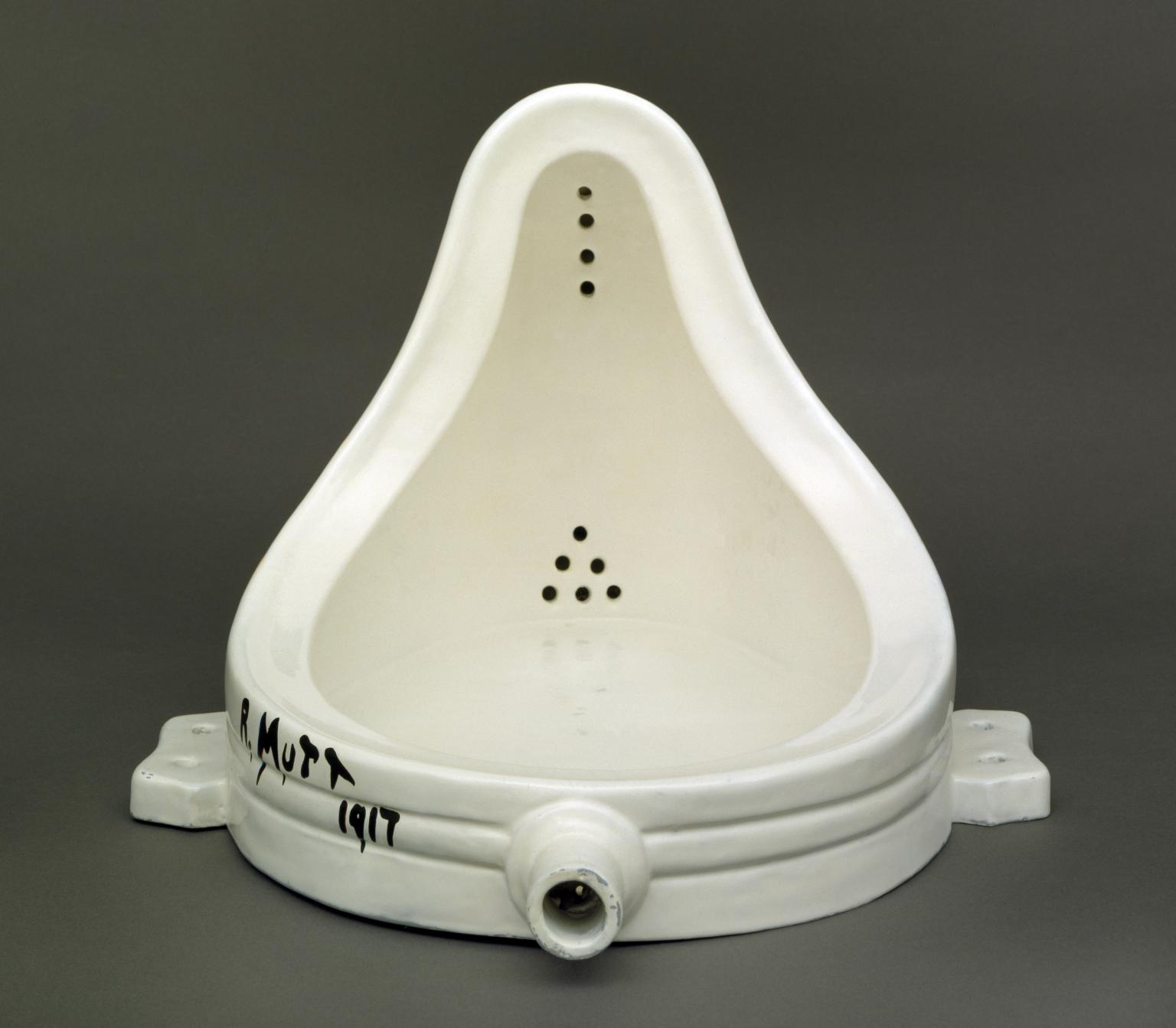Summary | Excerpt | Reviews | Beyond the Book | Read-Alikes | Genres & Themes | Author Bio

Insanity, Modernism, and Hitler's War on Art
by Charlie EnglishThis article relates to The Gallery of Miracles and Madness
 In The Gallery of Miracles and Madness, Charlie English connects the psychological effects of World War I to the evolving art scene in the early decades of the 20th century. The war not only killed upwards of 20 million people, but it also had an enormous impact on European culture in the decades after the guns fell silent in 1918. One of the most notable reactions to the war was a controversial artistic movement mocking traditional style and elevating nonsense to an art form. Called "Dada," it was founded by poet Hugo Ball in Zurich, Switzerland. Ball and other avant-garde artists from across Europe converged on the Cabaret Voltaire in Zurich to form an absurdist response to the catastrophe of WWI. Springing from their disgust of the rational world order, "their aim was to destroy traditional values in art and to create a new art to replace the old," according to the Tate art gallery, as well as to promote anti-war, anti-bourgeois attitudes.
In The Gallery of Miracles and Madness, Charlie English connects the psychological effects of World War I to the evolving art scene in the early decades of the 20th century. The war not only killed upwards of 20 million people, but it also had an enormous impact on European culture in the decades after the guns fell silent in 1918. One of the most notable reactions to the war was a controversial artistic movement mocking traditional style and elevating nonsense to an art form. Called "Dada," it was founded by poet Hugo Ball in Zurich, Switzerland. Ball and other avant-garde artists from across Europe converged on the Cabaret Voltaire in Zurich to form an absurdist response to the catastrophe of WWI. Springing from their disgust of the rational world order, "their aim was to destroy traditional values in art and to create a new art to replace the old," according to the Tate art gallery, as well as to promote anti-war, anti-bourgeois attitudes.
Preceded and deeply influenced by the movements of Cubism, Expressionism and Futurism, Dadaism established a new level of "non-art" expression centered around the ideas of "spontaneity, negation and absurdity," Tate explains. Disillusioned and appalled by the horrors wreaked by The Great War, Dada artists turned their back on traditional values and, indeed, rationalism itself, which they believed led to catastrophe. The music, literature, paintings, sculpture, performance art and photography of this style aimed at provocation, an idea illustrated by its name: Dada. There are different stories as to how this name came about, but Ball wrote of stumbling upon the term in a French-German dictionary in his diary: "Dada is 'yes, yes' in Rumanian, 'rocking horse' and 'hobby horse' in French...For Germans it is a sign of foolish naiveté, joy in procreation..." Often called "anti-art" by practitioners and critics alike, Dada had a short run of popularity (or notoriety, based on your viewpoint) from 1916-1923 and eventually gave birth to the more long-lived art movement of Surrealism.
While at the height of its fame, prominent artists of the genre included Hugh Ball, André Breton, Max Ernst, Man Ray, Marcel Duchamp, Hans Arp, and Raoul Hausmann, to name a few. Channeling and exhibiting creative chaos in every available medium, Dada artists often sought to shock and offend, as with Duchamp's Fountain, which was nothing more than a urinal turned upside down and signed with a fictitious name. Dada art often enraged both the public and art critics, which seemed only to fuel its devotees. Indeed, as it flouted conventional mores, Dada art can be viewed as more of a radical political statement or way of seeing life. Ball's 1916 Dada "Manifesto" declares:
How does one achieve eternal bliss? By saying dada. How does one become famous? By saying dada. With a noble gesture and delicate propriety. Till one goes crazy. Till one loses consciousness. How can one get rid of everything that smacks of journalism, worms, everything nice and right, blinkered, moralistic, Europeanized, enervated? By saying dada.
The Dada "moment" lasted roughly six years, but influenced its later manifestation, Surrealism, and continues to inspire today's modern artists. Channeling Duchamp, art provocateur Maurizio Cattelan's controversial piece America was nothing more than a solid gold toilet installed at the Guggenheim Museum in New York City. (In 2019, the toilet was stolen from Blenheim Palace in the UK, where it had been lent for an exhibition; several thieves were arrested, but the toilet's fate remains unknown.) For many, the Dadaists were visionaries, broadening the definition of "art" to include even its antithesis. As one writer observed upon the 100th anniversary of Dada in 2016, "in their subversiveness and experimentation, the Dadaists were forging modes of working and forms of art that would either anticipate or directly influence the shape of much art to come."
Fountain by Marcel Duchamp, 1917, courtesy of Tate
Filed under Music and the Arts
![]() This article relates to The Gallery of Miracles and Madness.
It first ran in the September 8, 2021
issue of BookBrowse Recommends.
This article relates to The Gallery of Miracles and Madness.
It first ran in the September 8, 2021
issue of BookBrowse Recommends.
Your guide toexceptional books
BookBrowse seeks out and recommends the best in contemporary fiction and nonfiction—books that not only engage and entertain but also deepen our understanding of ourselves and the world around us.